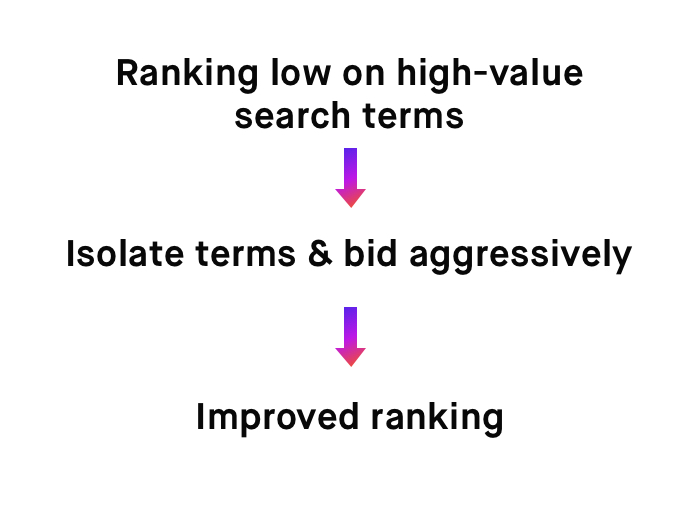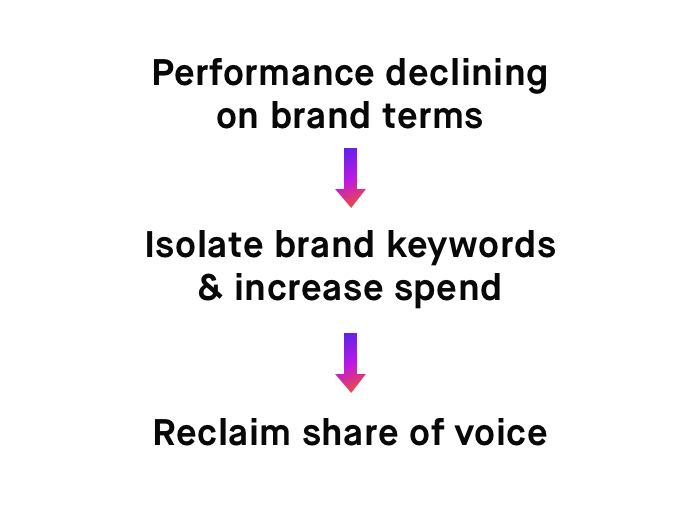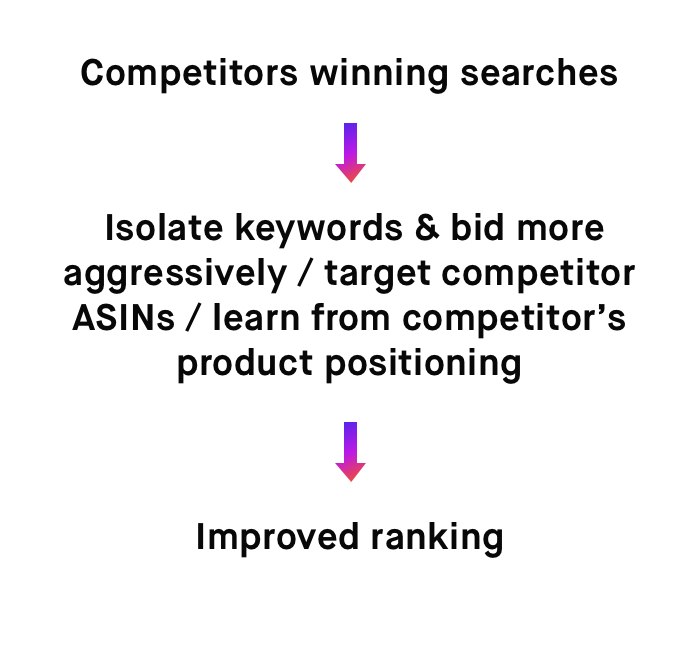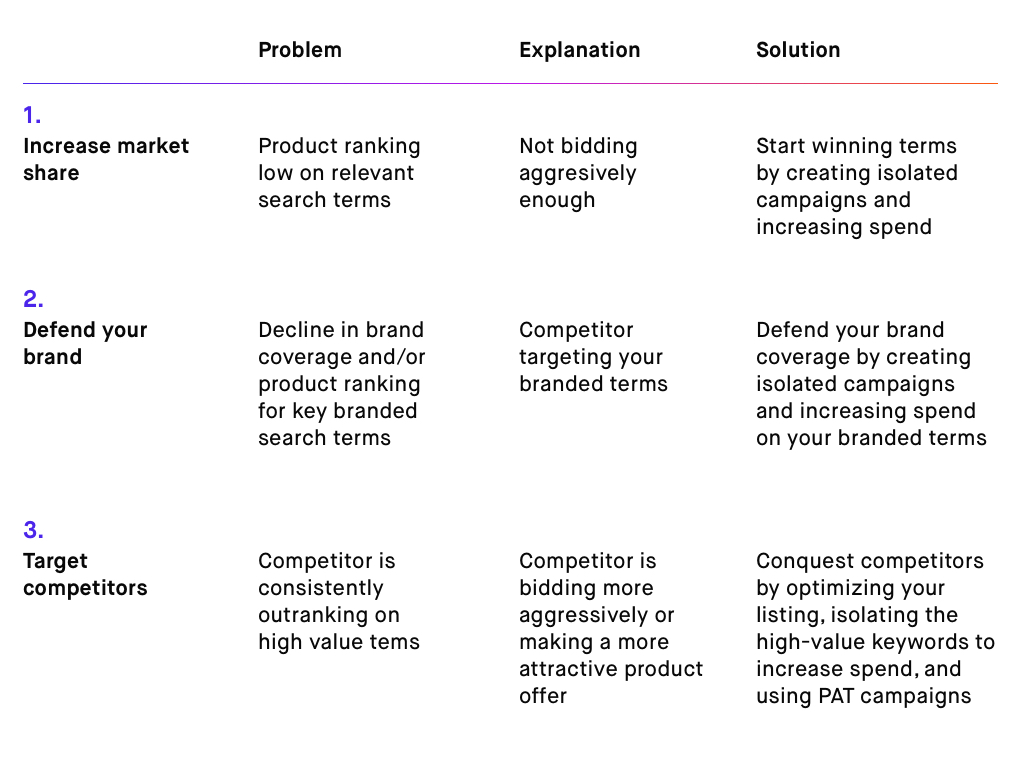Get ready to outperform your Amazon competitors
Ready to outperform your Amazon competitors?
There are lots of reasons you might be focused on this goal. Maybe your brand is strong and you’re looking for opportunities for incremental growth.
Or maybe the competition has been heating up in your category and you’re scrambling to figure out how to stop losing ground.
It could be that a brand or seller you’re competing against has been a thorn in your side and you just want the satisfaction of making them eat your dust for once.
In any case, the way to outperform your Amazon competition is to start with research and then use the results of your research to inform ad strategy.
Do your competitive research
Before you can beat them, you have to know what you’re up against.
Understanding what the opportunities are requires research into the competitive landscape. You’ll need a detailed analytical picture of what products you’re competing with, what brands are involved, and what search terms your competitors are winning.
Once you’ve collected that data, you can act on it by adjusting your ad strategy to grow your business and outpace that competition.
Increase market share
When you understand how you’re performing on different terms, you can use that information to increase your market share.
Are there search terms that are relevant to your products but that you’re ranking low on? Create a new ad campaign to isolate those terms. This will enable you to increase your bids on these terms and not overspend on terms where you’re already ranking high on the search page.
Every week or two evaluate the performance of these terms in the new campaign. The best outcome in this scenario is that your increased spend on these terms will beat out the competition, your products will have improved ranking on these terms, and you’ll see more page one placements.

A story of increased market share
Consider a brand we’ll call “Teikametrics Pillows” that wants to increase market share. They track a few dozen terms that are relevant to their product and find that “Evil Pillows” is consistently winning more share of voice on the term “bed pillow.”
Teikametrics Pillows puts the term “bed pillow” into its own isolated campaign and cranks up the aggressiveness of their bidding on that term. In short order, Teikametrics Pillows is winning more share on “bed pillow” than Evil Pillows.
Teikametrics Pillows has successfully acted on their analysis of competitor data to increase market share and outperform their competitor.
Defend your brand
Keyword research should include brand terms so you can be alerted of the need for a brand defense strategy. While branded targeting is unlikely to drive much incremental sales volume, losing volume on branded terms to competitors means letting those competitors take money out of your pocket.
Monitor the performance of any terms associated with your brand. If performance starts to decline on any of those brand terms or you see your product ranking declining, you could be dealing with a competitor newly targeting your brand terms.
You can defend your brand coverage by isolating your brand keywords in their own campaign or ad group and increasing spend on those terms. (For well-established brands on Amazon, it’s a good idea to keep brand terms separate from generic or competitor terms because you’ll want to apportion your spend differently.)
By increasing spend on your brand terms, you can reclaim some of the share of voice that your competitors are trying to steal from you.

A brand defense parable
Let’s say Teikametrics Pillows is tracking the performance of their own brand terms like “TeikaRest.”
They soon see they are regularly losing out on both organic and sponsored search for those brand terms to competitors like Wretched Rest and Surly Sleep.
Teikametrics Pillows isolates the keyword “TeikaRest,” increases their budget on branded keywords, and bids aggressively. In just two days their share of voice – what we call brand coverage on search – has increased by 15%.
Teikametrics Pillows is claiming back control of their own branded terms.
Target competitors
When you track your competitor’s performance on specific search terms, you can identify which terms your competitors are winning more than you are. Isolate where your competitors are winning and increase your spend on those keywords to try to steal them from the competition.
Another way to target your competitors is to go after the products that are winning instead of the keywords. Use Product Attribute Targeting (PAT) to target the competitor ASINs you want shoppers to turn down in favor of your product.
With PAT targeting it can be helpful to think through what would draw a shopper away from another product and towards yours. Consider targeting similar products with fewer reviews, a higher price point, or obviously lesser features.
If these strategies don’t improve your ranking, or when you assess the potential for PAT campaigns and realize your competitors have a superior offer, that’s an opportunity to learn from your competitors too. Study their product positioning and how they fill out their product detail page for ideas to improve your own offering.

A competitor targeting tale
In this story, Teikametrics Pillows’ keyword tracking system identifies a competitor that is consistently outranking them on high-value terms.
Teikametrics Pillows decides to research the competitive offering and finds that the competitor’s pillow, comparable to their own product, is priced well below their own. The competitor product also has many more reviews and stronger product images.
Teikametrics Pillows decides to utilize improved product images on their product listing. They also decide to run a promotional discount to match their competitor’s price. Doing this increases their sales volume, which in turn increases their opportunity to collect reviews.
Teikametrics Pillows is now ready to increase bids on the high-value terms they were losing out on and which they now isolate as their ranking on those terms continues to climb.
Three ways to outperform your Amazon competitors
Getting into the weeds of implementing these three approaches to outperforming your Amazon competitors can get quite complex.
To help clarify, we condensed them into a very simplified chart. This chart provides an encapsulation of the problem, explanation behind the problem, and solution to implement.

Leverage Market Intelligence for Flywheel 2.0
You can readily understand keyword performance and which of your competitors is winning on the keywords that matter to you when you leverage Market Intelligence for Flywheel 2.0.
Market Intelligence (currently only available to our ad management services clients) provides a competitive edge by enabling you to measure brand performance and monitor your competitors on Amazon.
This data can help set your strategy. You can quickly identify opportunities to increase market share, target competitors, and defend your brand, enabling you to implement the right ad strategies to improve sales and profitability.
Sign up for early access to Flywheel 2.0 which will integrate competitive analysis with ads management. For a limited time, get a free Amazon Market Intelligence consultation powered by Flywheel 2.0 technology.





